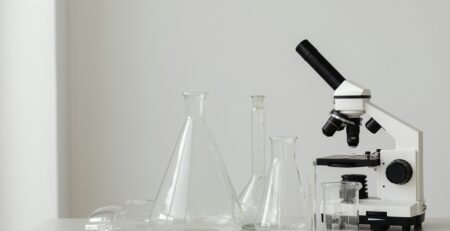4
Sep
Borosilicate Measuring Cylinders: Accuracy, Class Standards, and Lab Applications
Measuring cylinders are fundamental glassware in every laboratory, ensuring accurate measurement of liquids across education, research, and industry. Made from borosilicate glass (BORO 3.3), they provide precision, chemical resistance, and durability under repeated use. For Australian labs, understanding accuracy classes and application differences is key to choosing the right cylinder.
Accuracy and Class Standards
Measuring cylinders are classified into Class A and Class B according to ISO 4788 and ASTM E1272.
- Class A cylinders deliver the highest accuracy with tighter tolerances, often individually calibrated and supplied with certificates.
- Class B cylinders are designed for general laboratory use with wider tolerances, making them suitable for teaching and routine applications.
Both classes are commonly made from BORO 3.3 glass, providing resistance to heat and chemicals. For laboratories requiring traceability, Class A is essential, while schools and training environments often choose Class B for cost-effectiveness.
Borosilicate Glass Advantages
Borosilicate 3.3 glass is the gold standard material for measuring cylinders due to:
- High thermal resistance, allowing safe heating and autoclaving.
- Excellent chemical durability, resisting acids, solvents, and alkaline solutions.
- Clarity and readability of graduations, ensuring precise volume readings.
Unlike plastic alternatives, borosilicate cylinders remain dimensionally stable over time and minimise the risk of warping, even under high-temperature sterilisation.
Applications in the Laboratory
Measuring cylinders are used in:
- Analytical chemistry for preparing standard solutions.
- Quality control labs in food, pharmaceutical, and environmental testing.
- Educational labs for teaching measurement accuracy.
- Industrial labs where frequent chemical transfers demand durability and clarity.
By choosing the right class and capacity, laboratories can ensure both efficiency and compliance with international accuracy standards.
Comparison Table: Class A vs Class B Measuring Cylinders
| Feature | Class A Cylinders | Class B Cylinders |
|---|---|---|
| Accuracy / Tolerance | High accuracy, tighter tolerance (ISO 4788) | Lower accuracy, wider tolerance |
| Calibration | Often individually calibrated, with certificates | Bulk manufactured, no certificate |
| Ideal Applications | Research, pharmaceuticals, traceable results | Education, training, general lab work |
| Material | BORO 3.3 Borosilicate Glass | BORO 3.3 Borosilicate Glass |
| Cost | Higher | Lower |
FAQs
Q1: Why choose borosilicate glass over polypropylene measuring cylinders?
Borosilicate cylinders offer superior thermal resistance, chemical stability, and long-term accuracy. Polypropylene is cheaper but prone to staining, scratching, and distortion at higher temperatures.
Q2: Can Class B measuring cylinders be used in accredited labs?
Yes, but Class A is strongly recommended where ISO/ASTM traceability and compliance are required.
Q3: How should measuring cylinders be cleaned?
Use mild detergents and rinse with distilled water. For stubborn residues, acid cleaning protocols may be used, ensuring compliance with lab safety guidelines.
Q4: Are Class A cylinders worth the extra cost?
Yes, for critical measurements in pharmaceuticals, research, and QC labs, Class A reduces error margins significantly.
References
- ISO 4788: Laboratory Glassware — Graduated Measuring Cylinders.
- ASTM E1272: Standard Specification for Laboratory Glass Graduated Cylinders.
- ISO 3585: Borosilicate Glass 3.3 — Properties and Applications.
- NIST Chemistry WebBook, National Institute of Standards and Technology.
- University of Melbourne Laboratory Safety Manual.

